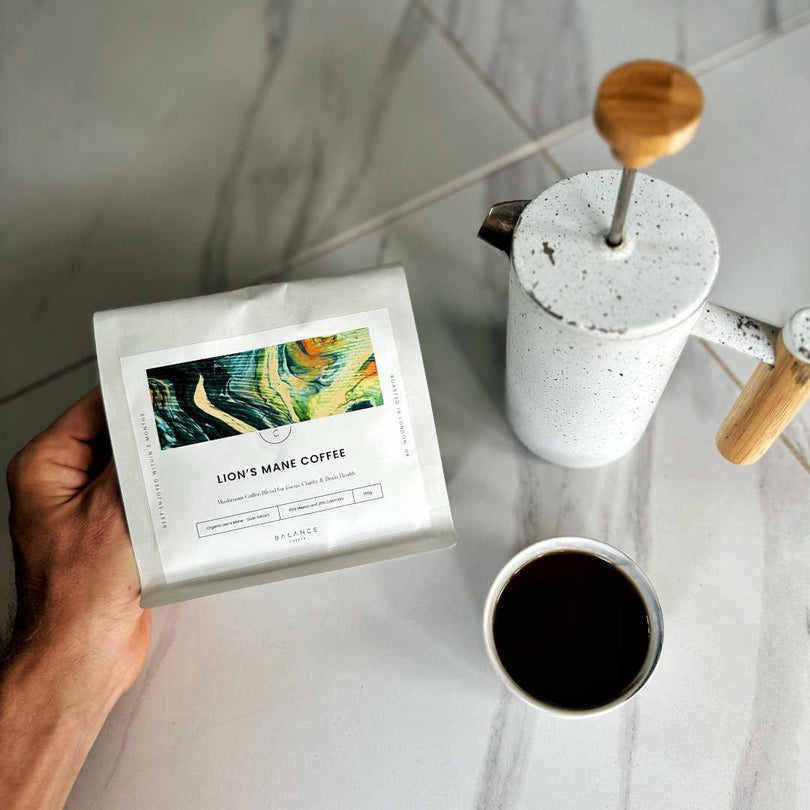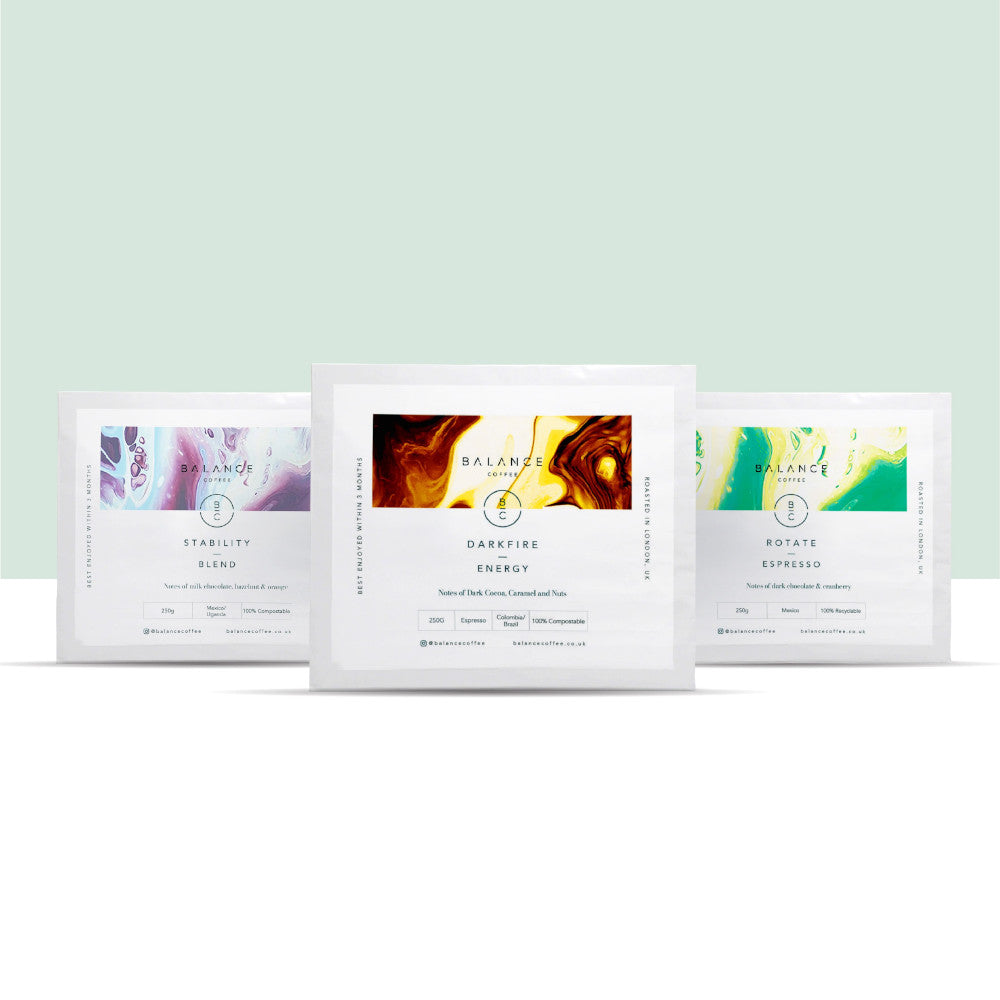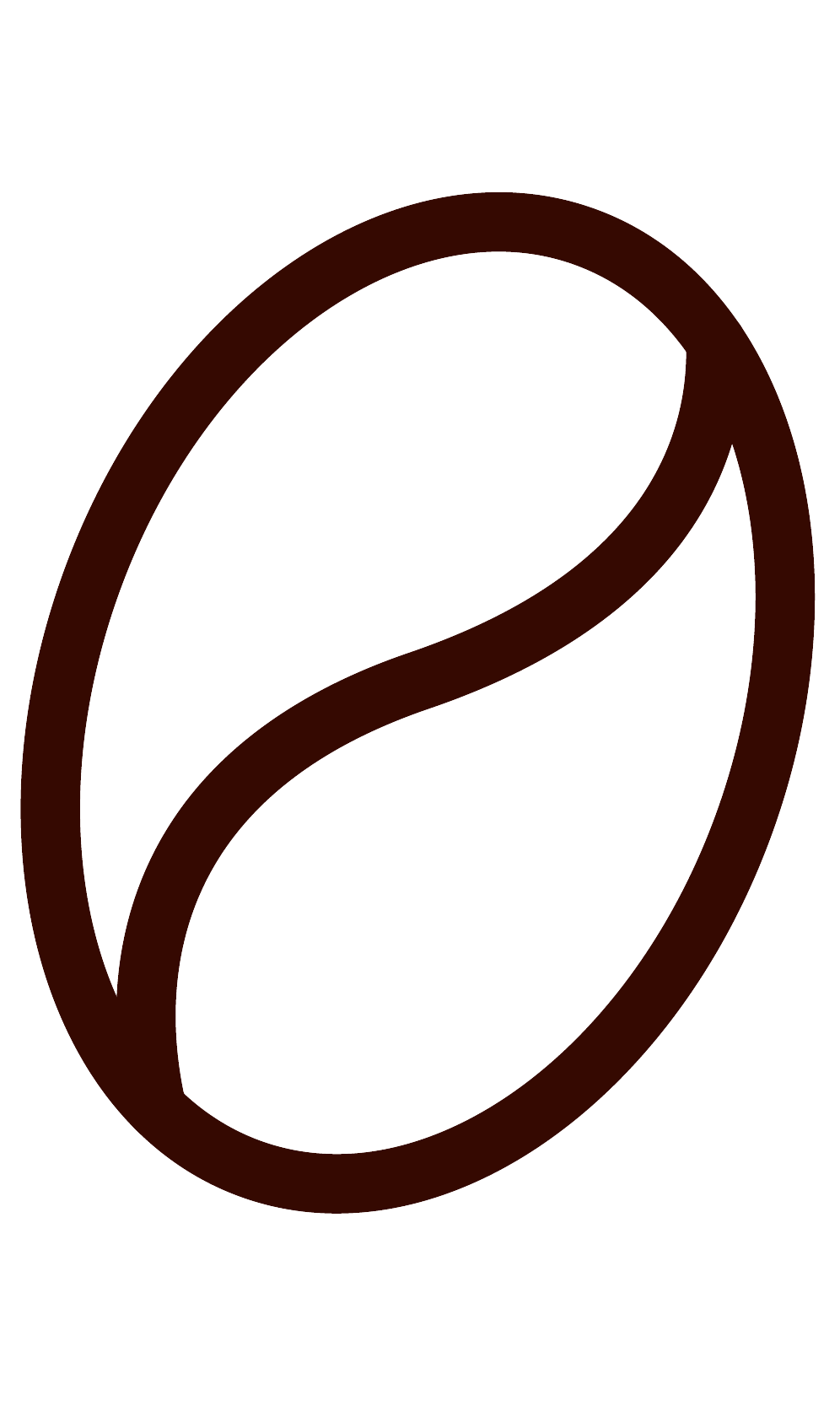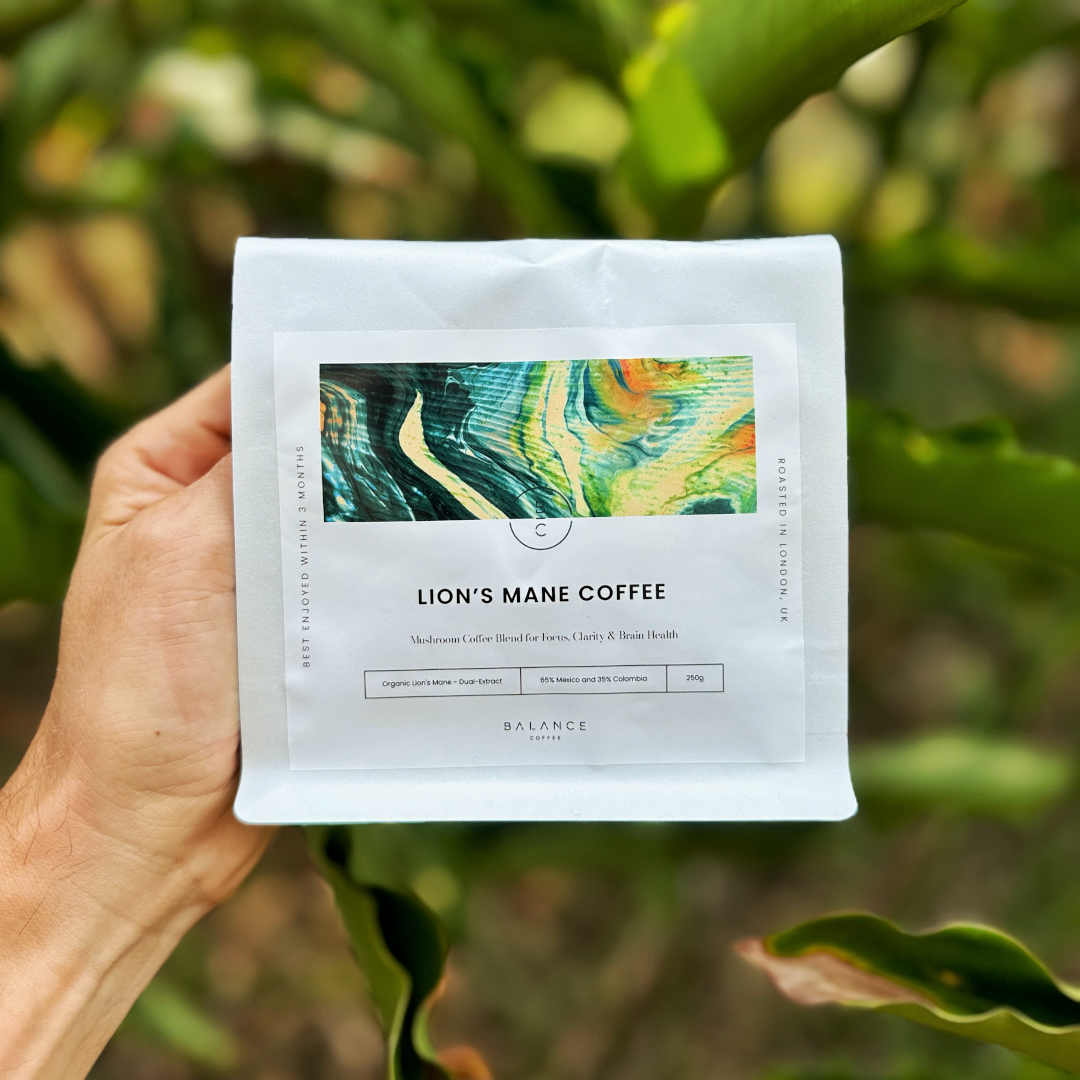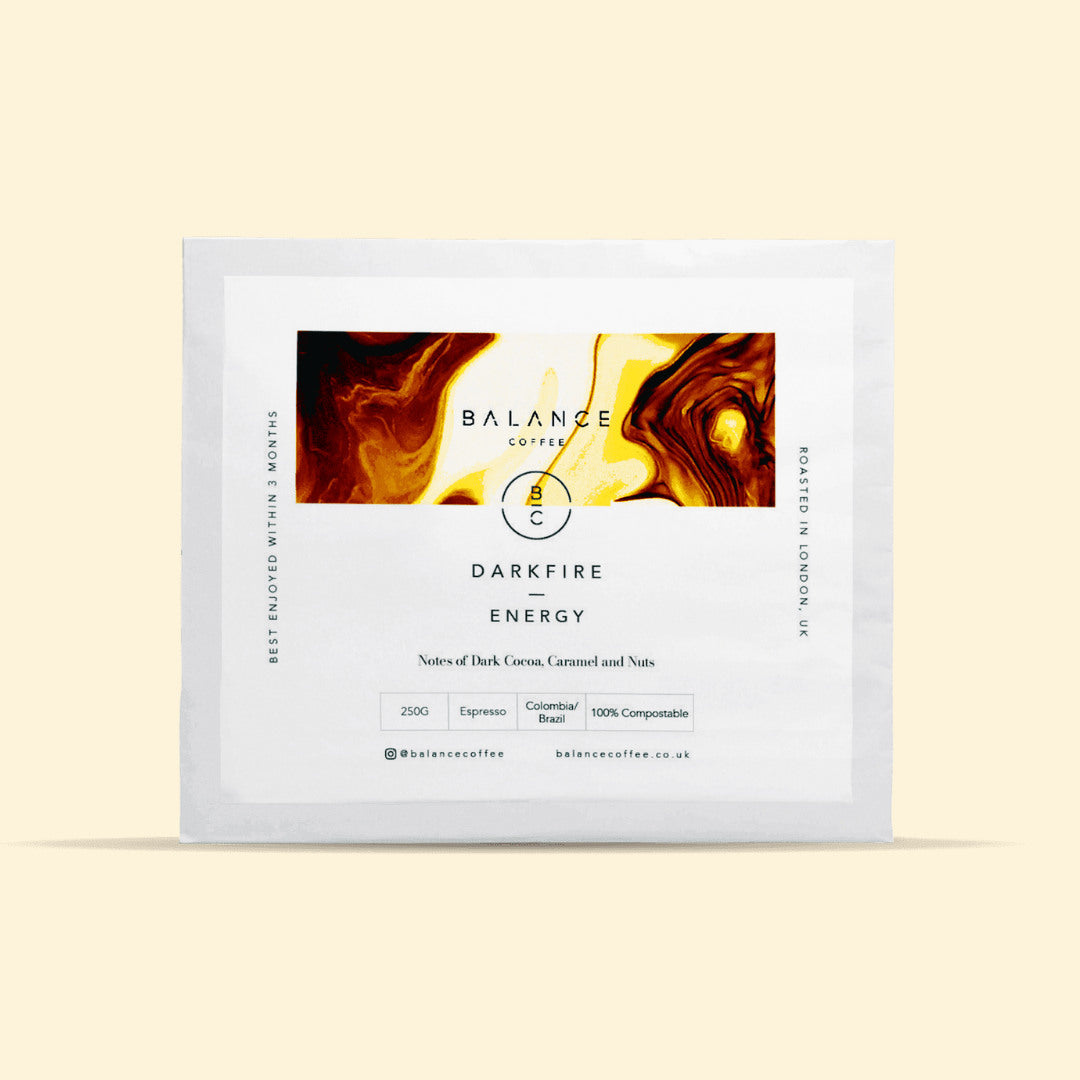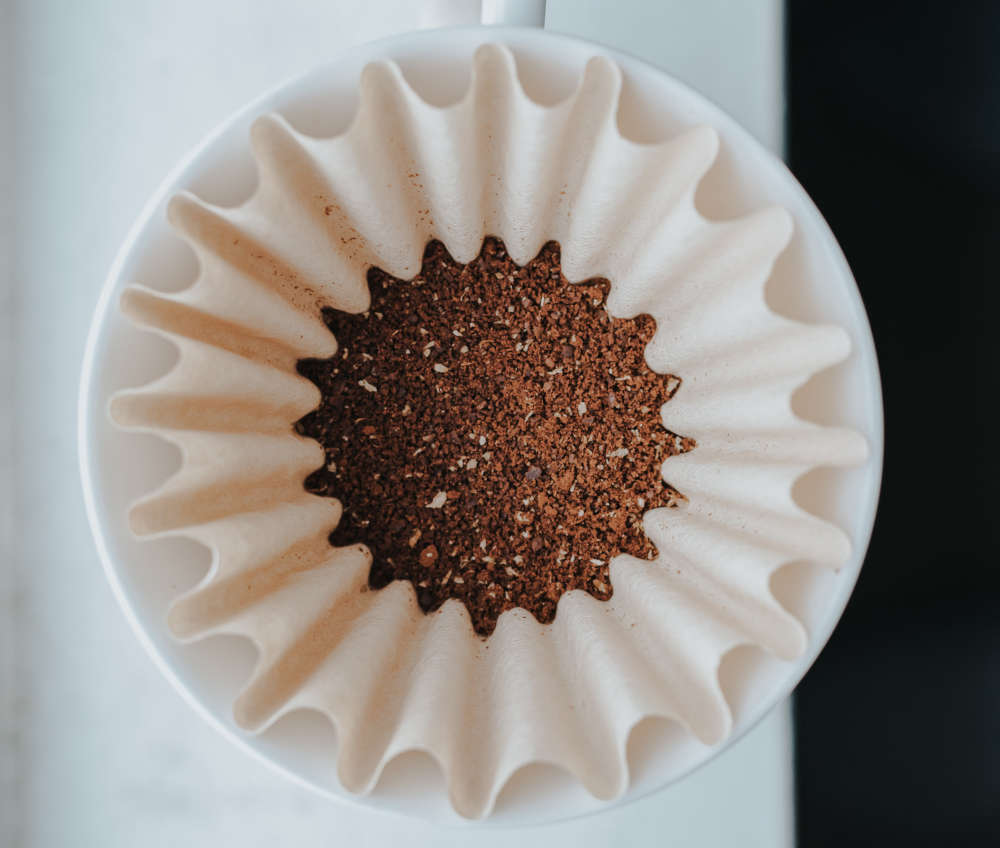So Kopi luwak coffee, what about it? The food world is very interesting, to say the least. Trends can come and go quickly — but some trends also stick around since:
- They’re just THAT intriguing, and
- Enough people have accepted the trend.
One such food trend is kopi luwak coffee, which seems to have taken the world by storm.
But what is kopi luwak?
We’ll answer that question (and everything else related to it) in this article. So, keep reading!
What Is Kopi Luwak?
First things first: What is kopi luwak?
Kopi luwak is traditionally a kind of Indonesian coffee, but it has also spread to other countries in Southeast Asia that have similar ecosystems and climates.
“Kopi” is the Bahasa Indonesian word for “coffee,” while “luwak” is what the Asian palm civet is called in Sumatra.
Kopi Luwak is also called civet coffee in the West. It’s a kind of drink made from coffee beans that are excreted whole by an animal called a civet cat.
In simpler words, it’s cat poop coffee. Despite the name, civet cats are actually not cats.
Civet coffee is more concerned with the process than the kind of coffee cherries a civet eats.
There are also different kinds of civet coffee, and the coffee depends on the cherries fed to the civet.
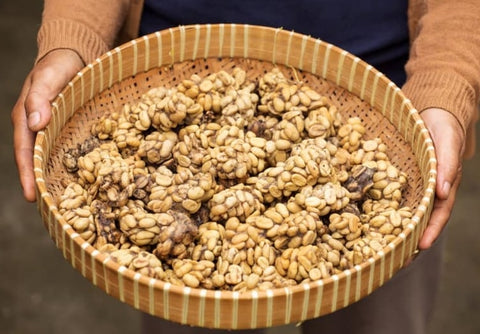
Among all those different kinds, Arabica coffee from excreted Arabica beans seems to be the most popular flavour.
I have also written a few in-depth article on, you should read it below.
- Types Of Coffee: Choose The Right Coffee Beans For You
- Arabica vs Robusta Coffee | Everything You Need to Know!
- Arabica vs Robusta Coffee Difference
What Is So Special About Kopi Luwak/Civet Coffee?
The main thing that makes this drink so special is its uncommon production method.
For one, the civet cats are fed only the ripest coffee cherries — which makes the best coffee.
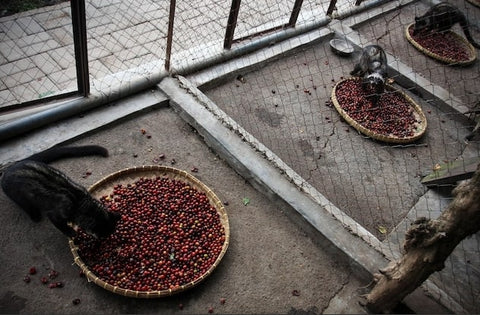
After that, you’ll need to wait for the beans to get pooped out before being cleaned and roasted so they’re ready for people to consume.
Aside from that, there’s something about a civet’s digestive tract that changes the chemical composition and taste of a coffee bean.
What Does Kopi Luwak Taste Like?
You’ll be happy to know that civet coffee tastes nothing like poop.
Instead, it has a unique taste and consistency that makes it stand out among other kinds of coffee in coffee cupping events.
Perhaps the most obvious difference you’ll notice with kopi luwak is it gives you a smoother cup of coffee.
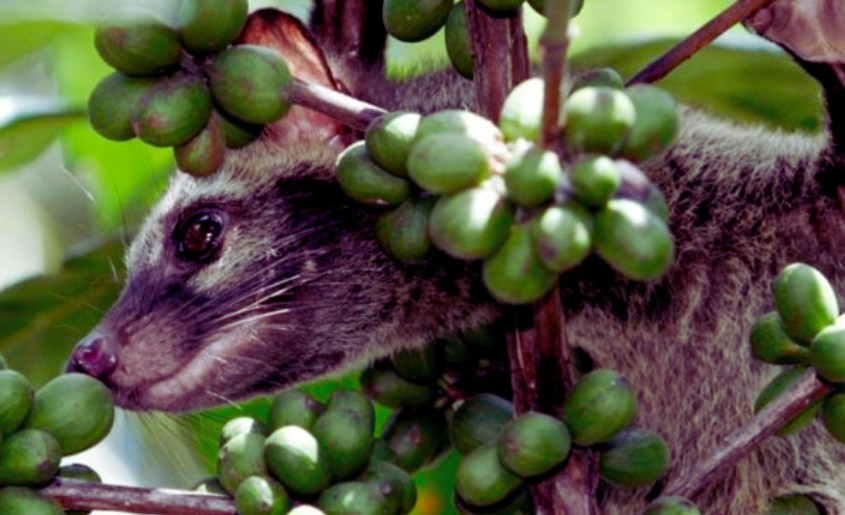
Avid coffee drinkers also appreciate the fact that you don’t get the high-acidity aftertaste that’s common in cheaper coffees. That can also mean there’s less caffeine content too.
but if you prefer coffee without caffeine in it then I suggest you try our Halcyon decaf coffee beans. It is a miracle in of itself and you will be thrilled.
The bitterness is scientifically proven to disappear thanks to the digestive enzymes in the civet — which break down protein molecules that would normally make coffee bitter.
In terms of the flavour profiles, it’s historically believed that civet coffee beans are more flavourful than typical coffee beans that fall on the ground.
Generally, the flavour of your cup of civet coffee largely depends on the civet cat’s diet and what coffee bean they’re fed.
Some examples of flavours you can expect with kopi luwak are:
- Rich earthy notes
- Citrus
- Chocolate
- Floral
- Syrupy
- Jungle undertones
However, everyday coffee drinkers might not be able to catch these “jungle undertones.”
All in all, kopi luwak is easy to drink — even for those who have difficulty dealing with the high-acid content of regular coffee beans.
How Is Kopi Luwak Coffee Made?
Traditionally, people just hunted down the droppings of wild civets.
But as the demand for kopi luwak grew, people started explicitly raising those civets in cages, local forests, or plantations.
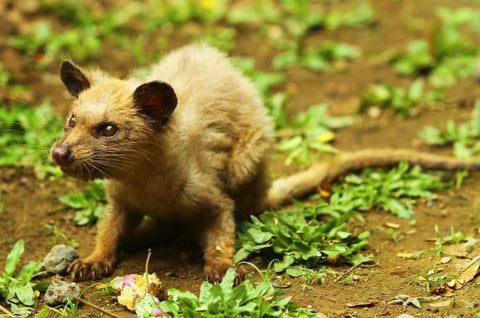
In general, here’s the kopi luwak production process:
- Native farmers will grow the coffee plants.
- Ripe coffee cherries from the plants are fed to the civet cats.
- Within 24 to 36 hours, the gastric juices from the civet’s digestive system will change the taste and chemical composition of the coffee beans.
- After the digestion process, the civet will poop — which will include the partially-digested coffee beans.
- The coffee beans are handpicked from the poop.
- The beans are processed — this includes being washed, dried, and roasted.
- The kopi luwak beans are packaged and sold.
Why Did People Start Drinking Cat Poop Coffee?
We’ll give you a rundown on why people even thought of making coffee made of civet droppings in the first place.
Kopi luwak history started in the early 1600s when the Dutch invaded Indonesia and were introduced to the glory of coffee.
The Dutch then started sending it back to Europe. Unfortunately, the West’s demand for the amazing coffee bean began to grow, and the Dutch started struggling to keep up.
Recommended For You: Best Decaf Coffee Beans Brands UK (Comprehensive List)
That’s because a war between two classes of people in Indonesia started. This war lasted 34 years, and the Dutch were eventually asked to step in.
Aside from that war, there was another one that lasted only five years — which was between the Javanese and the Dutch themselves.
The Dutch managed to win both those wars, but it drastically drained their resources.
So, to get back the money they needed, they imposed the Cultuurstelsel (or The Cultivation System). This system told the Javanese:
- What products to grow
- How to grow them
- Who would grow them
- How long should they work
One of the biggest things about this system was that the people were forbidden to keep some of the products (which included coffee) for themselves.
No one knew who exactly thought to check if civet poop had usable coffee beans. All that’s known is that the Javanese started harvesting coffee beans in this way during the Cultuurstelsel.
The upper classes eventually heard of this interesting bean that was of great quality, and the kopi luwak beans started growing in popularity.
However, it wasn’t until the 1990s that kopi luwak became known internationally.
Why Is Kopi Luwak Coffee So Expensive?
The two main reasons for kopi luwak being an expensive coffee are its high demand and the time and effort that goes into its production.
Small Supply
Around 50 tons of kopi luwak coffee are produced every year.
Though that sounds like a lot, that’s nothing when you find out that there are about nine and a half million tons of coffee produced each year.
There’s also a high demand for kopi luwak worldwide — in fact, the international market size was valued at $6.5 billion in 2021 and is expected to reach $10 billion by 2030.
Kopi Luwak Production
So much time and effort are needed to produce kopi luwak.
For one, civet cats are naturally choosy about the coffee berries they eat — so they’re only fed the ripest cherries.
Aside from that, it takes at least a day for a civet to poop out the beans.
Of course, there’s also the job of gathering the civet poop and picking the coffee beans out of them — which is both disgusting and quite labor-intensive.
How Much Does a Cup of Kopi Luwak Cost?
Kopi luwak is one of the most expensive coffees you can buy.
One cup of this specialty coffee can cost anywhere between $35 to $80.
If you’re buying by the pound, one pound has a hefty price tag of $100 to $500.
The more expensive civet coffee bags usually come from wild civets rather than caged ones. After all, looking for the droppings of wild civets is more time-consuming and labor-intensive than just visiting civet cats in cages.
The Controversial Production of Kopi Luwak Coffee Beans
There are a number of problems concerning kopi luwak.
First of all, the bag of kopi luwak coffee you have is most likely from caged civets. After all, finding free-range civets isn’t friendly to a business’s time, money, and labor.
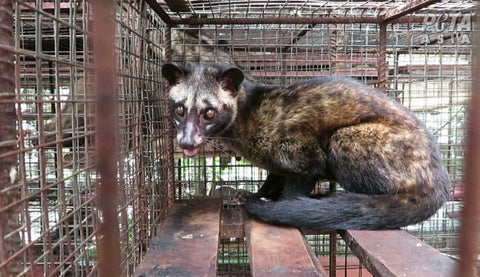
The problem with that is that the coffee plantations that get Asian palm civet cats from the wild typically don’t pass animal welfare standards. Below are a few reasons for that:
- Civet cats are solitary and territorial. Unfortunately, they’re taken from their natural habitat and normally crammed in small spaces — which leads to fights and the easy spreading of illnesses. They also don’t have access to interaction with other wild animals of their own accord either.
- The raised civet cats are sometimes kept in metal cages to make harvesting their poop easier. Aside from being uncomfortable, the metal wires can cause wounds and sores all over the civets’ bodies.
-
Civet cats are naturally shy and nocturnal, but many coffee plantations let tourists enter to view them during the day.
- Civet cats have a diverse diet of pulpy fruits, seeds, berries, and small insects. But to produce more beans (and get more profit), they’re typically force-fed only coffee cherries. This can cause malnutrition and other health problems. This can mess with their digestive tract, leading to low-quality beans.
- As previously mentioned, civet cats can be choosy about the quality of the cherries they eat. When they are force-fed with cherries, they aren’t able to choose the very best ones for themselves. This can also degrade the quality of the coffee beans.
- There’s also the concern that the wild civet population might decrease due to people catching them to be farmed.
Reading all that, you might be wondering: Maybe it’s better to just look for civet poop in the wild, even if it’s cost-, time-, and labor-intensive.
Sadly, it’s not as easy as that.
That’s because there’s no way to tell if the wild animal poop is civet poop.
Another problem is the possibility of buying fake beans. As with fake designer bags and shoes, there are people who want to cash in on the popularity of civet coffee.
Some of these manufacturers try to mimic the processes that authentic kopi luwak undergoes in a civet cat’s digestive tract. They do this by adding various chemicals to the cherries and beans.
Some sellers even just take your everyday traditionally-fermented beans and advertise them as kopi luwak.
Frequently Asked Questions
This specialty coffee has really grabbed the interest of people around the world — both inside and outside the coffee industry.
Below, we’ve answered some frequent questions on the Asian palm civet coffee:
Is Kopi Luwak Clean?
Yes, kopi luwak is clean.
That’s because the cleaning process is very intensive. After all, you’re technically making something edible from poop — which increases the risk of fecal contamination.
The beans from civet poop are cleaned by being washed first. Then the outer shell is removed, and the beans are dried under the sun.
Once dried, farmers will rewash the beans, ensuring that there are no outer shells left. Then, they are dried again. After that, the beans are roasted at 220° Celsius.
Is Kopi Luwak Coffee Safe to Drink?
Yes, kopi luwak coffee is safe to drink.
That’s because the washing and roasting process ensures that no germ or bacteria will survive.
However, there’s a possibility of fungus growth in the droppings if you don’t get them within 24 hours.
That shouldn’t be a problem with caged civet cats, but there’s no sure way of knowing how long civet poop has been on the ground if you’re gathering them in the wild.
How Can I Prepare Kopi Luwak Coffee?
One of the most common ways of serving it is brewed coffee. It’s easy enough if you have a coffee machine and a grinder too!
Here’s how to brew good coffee:
- Pour hot water into the coffee pot to heat for a bit, then empty it out. Doing so ensures that the coffee you put in later doesn’t undergo rapid cooling.
- Grind your coffee and put it in the coffee pot. (PRO TIP: A good rule of thumb is to put two tablespoons per cup of coffee when brewing)
- Let your coffee machine work its magic.
- Enjoy your cup of specialty coffee!
Are There Other Types of “Animal Poop Coffee”?
Yes, there are other kinds of animal poop coffee. Below are some examples:
Bat Coffee
Bat coffee is a kind of Costa Rican coffee that comes from the Artibeus jamaicensis.
Though people call it “bat poop coffee,” it’s actually not from the bats’ droppings.
Instead, they come from coffee cherries that were nibbled by bats.
The bats eat these cherries while they’re still on the branches. In doing so, they’re coating the whole thing with their saliva — which will cause a natural coffee processing method thanks to their digestive acid.
These nibbled-on beans are then harvested.
The bat saliva/digestive acid that coats the cherries will cause the coffee bean to have a delicate floral and fruity flavour that’s only slightly acidic.
Bat coffee is one of the rarest coffees, mostly found only around Costa Rica.
Bird Poop Coffee
Bird poop coffee is very recent compared to other animal poop coffees.
It started only in 2009 on Henrique Sloper’s farm in Camocim, Brazil.
The story is that Jacu birds feasted on his coffee plantation — but instead of chasing them away, he noticed that the birds only ate the really ripe coffee cherries (which are their favourite).
He tried the idea of harvesting the beans from the droppings and found that it produces a nutty and honey flavour that’s mild and pleasant.
Jacu birds are herbivores, so their digestive process can improve the natural qualities of the beans.
Elephant Poop Coffee
Black Ivory Coffee sounds very fancy – but it’s really just made from elephant poop.
These are produced exclusively by Thai elephants in Ban Ta Klang, Surin, Thailand.
Coffee cherries are mixed in with the elephants’ typical diet of fruits, rice, or other feed, so they’re still getting a balanced diet.
The digestive process takes one to three days, then farmers harvest the beans and clean them.
Black Ivory coffee is a delicate cup of coffee that has a very interesting flavour profile:
- Malt
- Chocolate
- Floral
- Cherry
There are even hints of grass, tobacco, and leather.
Another great thing about it is that there’s no hint of bitterness at all.
Admittedly, coffee cherry isn’t naturally part of an elephant’s diet — however, there haven’t been a lot of studies showing that feeding them cherries will negatively affect their health.
Monkey Coffee
Same with bats, it’s not the poop that’s actually used with monkeys. Instead, they chew on the coffee berries, then spit them back out.
The saliva will break down the enzymes in the coffee bean, which will cause its natural flavour to change.
Monkey coffee comes from Rhesus monkeys, mostly found in the coffee plantations of Taiwan and Chikmagalur, India.
Also similar to bird poop, the monkeys were first seen as pests who targeted the coffee cherries. However, instead of chasing them away, farmers figured out a new way of producing coffee.
Monkey coffee has a sugary sweet, caramelized flavor. Other flavours you can encounter include:
- Chocolate
- Citrus
- Nutty
- Hints of vanilla
This kind of coffee can mostly be bought in Taiwan or India.
It’s also quite rare since coffee farmers just let the monkeys roam around their plantations — compared to the civet cats that are force-fed cherries.
The Bottom Line: Is Asian Palm Civet Coffee Worth It?
So, is civet coffee still worth it? It’s worthy of being tried, so we won’t stop you if it intrigues you.
After all, it’s the most expensive coffee in the world — what with it not being produced in the traditional method.
However, there’s also the question of ethics in how other civets are treated on plantations.
As naturally wild animals, civets should have the freedom to roam around and choose the best cherries for themselves.
If you want to try civet coffee, we highly suggest being critical of a company’s ethical processes and certificates of authenticity first.
With that said, if you enjoyed this article share it on Facebook and Twitter.
Lastly, you can try our coffee subscription for different coffee flavours that would leave you longing for more.


